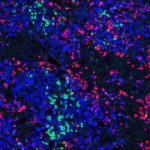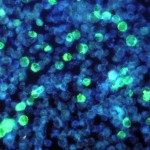Lien vers Pubmed [PMID] – 12490299
Mech. Dev. 2003 Jan;120(1):89-98
Analysis of liver cells during development is facilitated by the possibility of complementing in vivo analysis with experiments on cultured cells. In this review, we discuss results from several laboratories concerning bipotential hepatic stem cells from mouse (HBC-3, H-CFU-C, MMH and BMEL), rat (rhe14321) and primate (IPFLS) embryos. Several groups have used fluorescence-activated cell sorting to identify clonogenic bipotential cells; others have derived bipotential cell lines by plating liver cell suspensions and cloning. The bipotential cells, which probably originate from hepatoblasts, can differentiate as hepatocytes or bile duct cells, and undergo morphogenesis in culture. Disparities in differentiation can be explained by distinct medium compositions, extracellular matrix coated culture surfaces, and gene expression detection methods. Potential applications of these cell lines are discussed.


